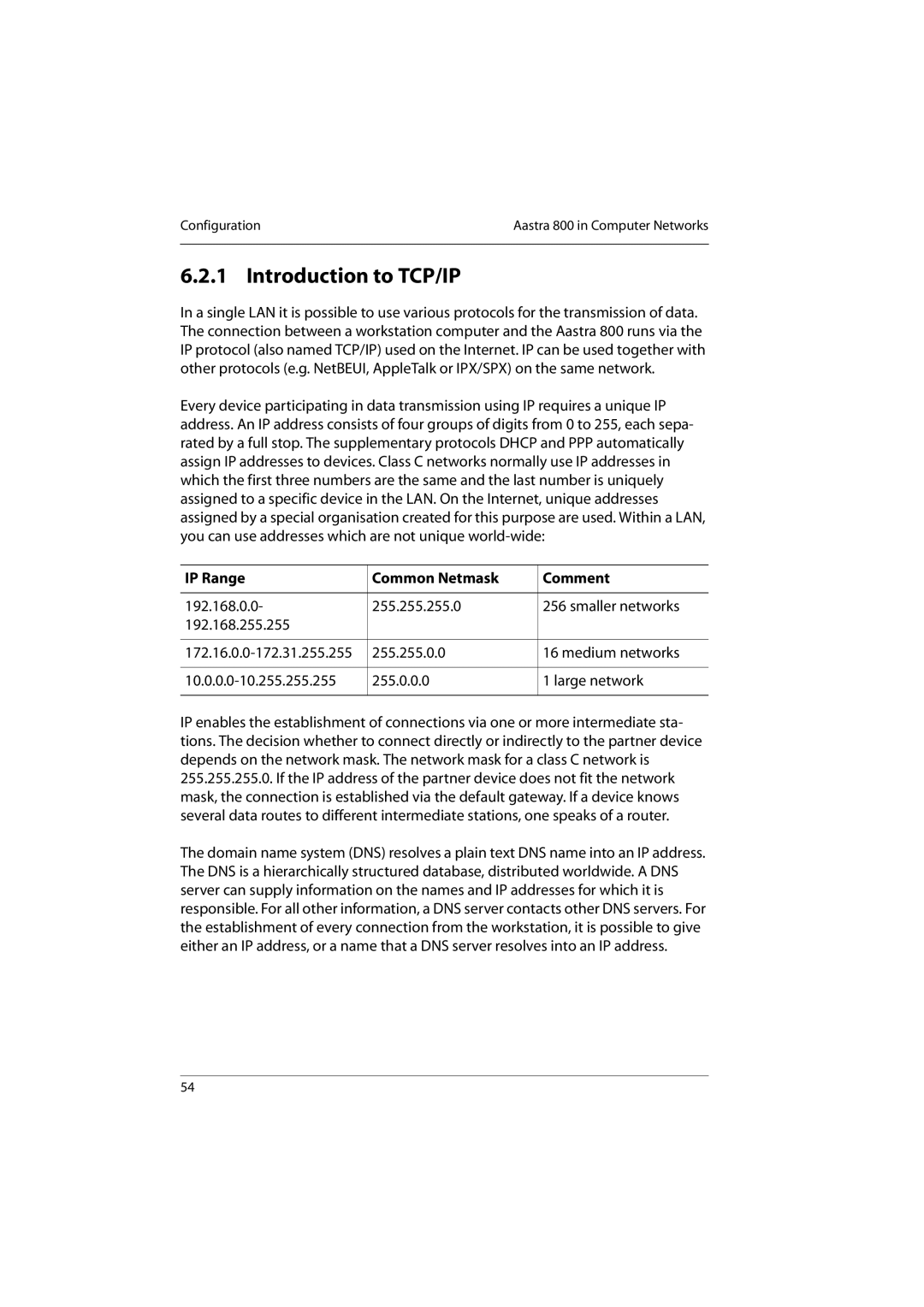Configuration | Aastra 800 in Computer Networks |
|
|
6.2.1 Introduction to TCP/IP
In a single LAN it is possible to use various protocols for the transmission of data. The connection between a workstation computer and the Aastra 800 runs via the IP protocol (also named TCP/IP) used on the Internet. IP can be used together with other protocols (e.g. NetBEUI, AppleTalk or IPX/SPX) on the same network.
Every device participating in data transmission using IP requires a unique IP address. An IP address consists of four groups of digits from 0 to 255, each sepa- rated by a full stop. The supplementary protocols DHCP and PPP automatically assign IP addresses to devices. Class C networks normally use IP addresses in which the first three numbers are the same and the last number is uniquely assigned to a specific device in the LAN. On the Internet, unique addresses assigned by a special organisation created for this purpose are used. Within a LAN, you can use addresses which are not unique
IP Range | Common Netmask | Comment |
|
|
|
192.168.0.0- | 255.255.255.0 | 256 smaller networks |
192.168.255.255 |
|
|
|
|
|
255.255.0.0 | 16 medium networks | |
|
|
|
255.0.0.0 | 1 large network | |
|
|
|
IP enables the establishment of connections via one or more intermediate sta- tions. The decision whether to connect directly or indirectly to the partner device depends on the network mask. The network mask for a class C network is 255.255.255.0. If the IP address of the partner device does not fit the network mask, the connection is established via the default gateway. If a device knows several data routes to different intermediate stations, one speaks of a router.
The domain name system (DNS) resolves a plain text DNS name into an IP address. The DNS is a hierarchically structured database, distributed worldwide. A DNS server can supply information on the names and IP addresses for which it is responsible. For all other information, a DNS server contacts other DNS servers. For the establishment of every connection from the workstation, it is possible to give either an IP address, or a name that a DNS server resolves into an IP address.
54
